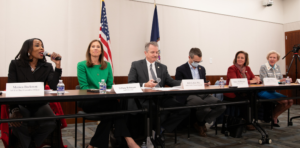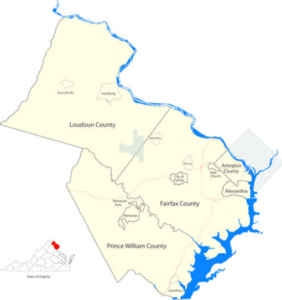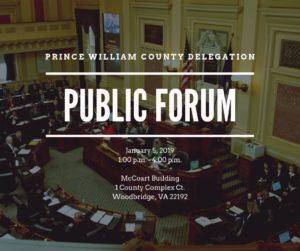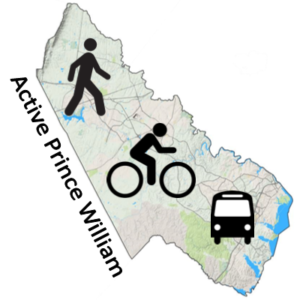
Active Prince William Co-Chair Allen Muchnick delivered the statement below at the Northern Virginia Transportation Authority’s annual public hearing on January 9, 2025.
Northern Virginia Transportation Authority’s Annual Public Hearing, January 9, 2025, Statement by Allen Muchnick, City of Manassas Resident
Good evening. I’m Allen Muchnick, a City of Manassas resident.
NVTA proclaims multimodality and “core values” of equity, safety, and sustainability, but it takes effective policies and performance measures to rise above empty buzzwords and greenwashing.
For instance, NVTA still lacks any Complete Streets policy, and it doesn’t track and report the greenhouse gas emissions generated by its funded projects. When counting the active mobility lane miles funded by NVTA (see the presentation under Agenda Item #5), it’s greenwashing to combine the 30% and 70% projects or to count the replacement active mobility facilities in road-widening projects.
Do we advance equity, safety, and sustainability by building–and perpetuating–wide and fast commercial roadways that injure or kill hundreds of pedestrians annually, increase vehicle miles traveled, and promote more auto-dependent sprawl?
Is it equitable, sustainable, or cost-effective to spend sales tax and other non-motoring revenue to expand roads in the outer NoVA counties so more people who work in NoVA or DC can commute in single-occupant vehicles from localities beyond NoVA?
Yet, according to NVTA’s NoVA Gateway project-tracking website, during 16 fiscal years, NVTA has so far awarded only about 3.5% ($131.4 million) out of $3.8 Billion in regional funds to 11 standalone active mobility projects (and of that amount $39.1 million has been set aside for a single project, the CC2DCA connector). Of the 105 projects that have so far actually received NVTA regional money, less than 2.3% ($54.4 million) of the $2.4 billion allocated has flowed to a mere 7 standalone active mobility projects.
Thus, at NVTA’s historic rate of allocating its regional funds for standalone active mobility projects, it would take roughly 1700 years (at $8.2 million/year) to fully fund NoVA’s already planned active mobility facilities.
NVTA could receive more equitable, safe, and sustainable projects to evaluate for funding if the Authority were to require each locality or agency to hold an advertised public hearing before the relevant governing body endorses any project for NVTA-related funding, including from the federal CMAQ and RSTP programs.
Presently, in localities without a transportation advisory commission, such project funding submissions are often developed behind closed doors and simply placed on the governing body’s consent agenda. Requiring advertised public hearings well before governing body endorsement could alter the mix of submitted projects—such as more standalone active mobility projects—as well as modify or expand the scope of the multimodal project submissions in light of the early public input.
Finally, NVTA should increase transparency and public trust by posting all proceedings of its Regional Jurisdiction and Agency Coordinating Committee on its website.
Thank you for this public comment opportunity.




